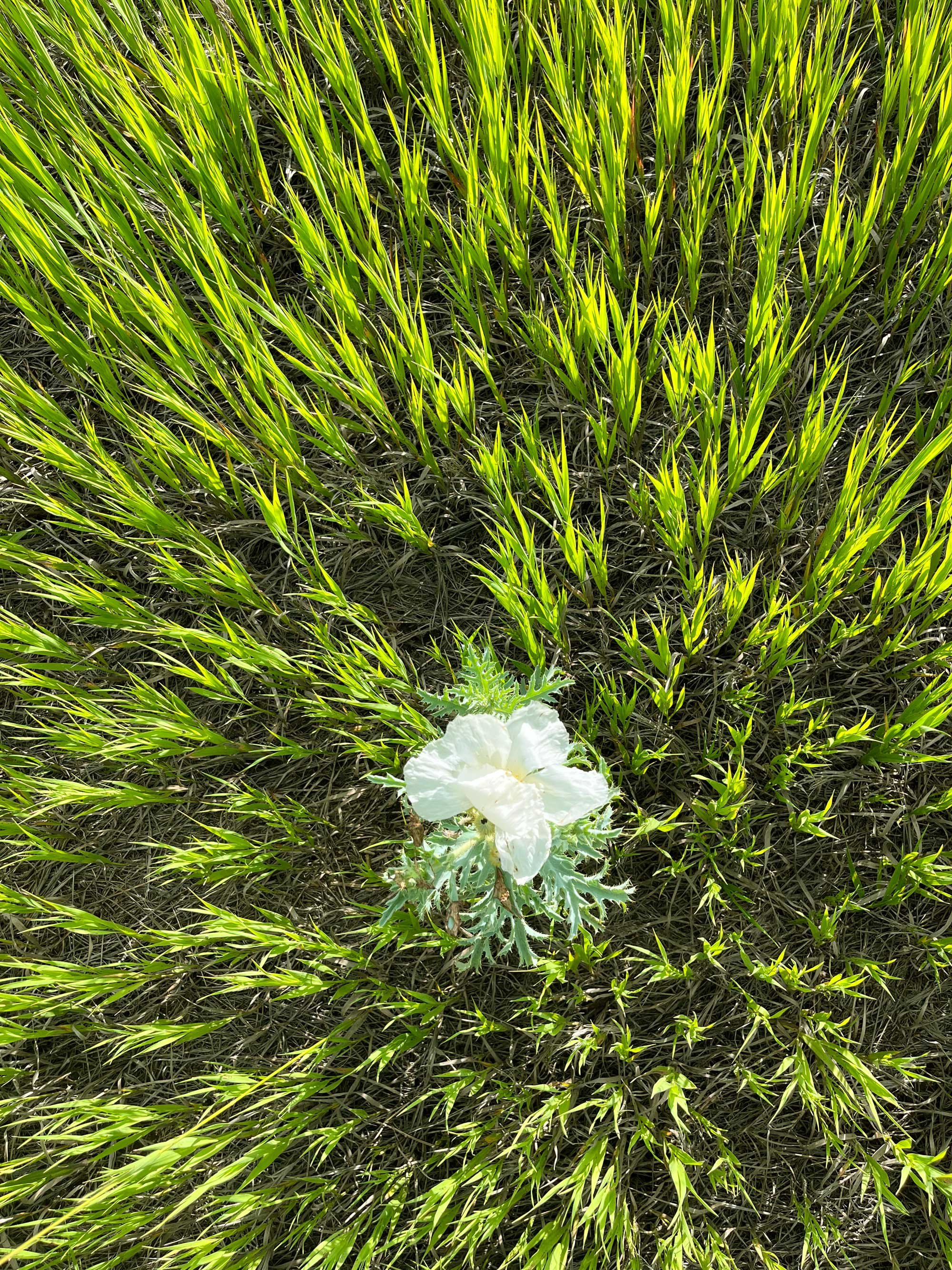Overland
To let out means to tell a story.
To Plant a Tree
How well I knew the acres
once
but then I dug
a hole
How well I knew the blades
of grass
I cut
but then I lifted up
a patch
& mold & stones
& a thousand lives live, liv-
-ing in
this nowhere
I have bare-
-ly known.
what
move
what
texts
texts
west
“
Some books, it is said,
need no explanation.
This one does.
”
—Ansel Watrous, History of Larimer County, Colorado
1911
Inhabitation: A Preface
(an excerpt)
I live at the base of the Rocky Mountain foothills in Larimer County, Colorado. Our three acres, “ceded by treaty,” were part of a larger 160-acre plot “purchased” from the Arapahoe and Cheyenne for 86 cents.
Because rattlesnakes hide in the tall grass, I mow much of our property several times a year. One spring my husband and I set out to remove protruding rocks in hopes of saving the mower’s blade. As we dug, we realized if we combine our surnames—Hadfield, from Old English heathland, field, pasture, open country; and Steensen, from the Dutch steen, stone, son of stone—we would arrive at Fieldsen, “son of field,” or “Steenfield,” “field of stone.”
We quit digging, and we now replace the mower’s blade every year.
Ansel Watrous, the reluctant author of History of Larimer County, Colorado, published in 1911, claims there are “two legitimate ways of writing history. One is to make a plain, simple statement of fact; the other to clothe the statement in language fitted to appeal to the reader’s imagination.” Rushed to write his history before all the pioneers of the region died off, he chose the former, but invited “him who writes the next history of Larimer County to enlarge upon the theme and clothe the facts in literary raiment.”
The facts, though, are ghosts and ghosts don’t wear clothes.
• • •
Two miles from my house, on a hill overlooking the foothills to the west and the valley to the east, there is a settlers’ cemetery. Possibly an earlier indigenous burial ground, the cemetery holds the remains of white colonists, French-Canadian trappers, Native Americans, Mexican Americans, and Mexican nationals, along with many of their multiracial offspring.
The graves of Bazille and Mary Provost, children of French Trapper John Provost, a “squaw man,” and his wife White Owl, are the oldest marked graves in Larimer County.
John “purchased” White Owl from her brother when she was sixteen, renaming her Mary, after his own mother.
Naming is, as we all know, a method of control.
Naming is, as we all know, a method of control.
Renaming, a claiming.
The cemetery is now known as “Bingham Hill Cemetery,” but in its earliest years, it carried the name of the nearby town, “Laporte,” previously “Colona,” colony. For many years, the cemetery sat overgrown and all but forgotten.
Is a grave an archive? Is a name?
Laporte, “Behold the door.” Laporte, “A threshold,”
a word of half known origin—thresh, to tread or trample; hold, unknown.
Doors, Mircea Eliade tells us, “are symbols and at the same time vehicles of passage from one space to another… the paradoxical place where those worlds communicate.”
• • •
Several summers ago, my husband used an ax to decapitate a baby rattler in our own doorway. In Indian Vedic texts we find the story of an astronomer leading a mason to the exact place where he is to lay his cornerstone, underneath which a primordial snake lies. When the mason’s stake penetrates the ground, the snake is decapitated, obliterating chaos, bringing form into the world. The house is consecrated.
Is a snake an archive? Is a stake?
Is there an unbuilding, an unnaming, an unclaiming to be found in form?
Can a poem unconsecrate?
Because of the labor the land requires, I sometimes begin to feel that I belong to it, and it belongs to me.
This isn’t untrue, but it isn’t the whole truth either.
The poem’s wisdom turns to unknowing and unowning.
The poem’s wisdom turns to unknowing and unowning.
Overland
Just because the house is new(ly owned) doesn’t mean the land is. Let me wrench me from its grip the way I lay down this atop its past. Let me pass it. It irks and it hurts but let me let me stop it. Oft it. Often it softens.
All website content copyright © Sasha Steensen, unless otherwise noted.
The Christman Airfield photo and the Piñon Pine photos in the preface are anonymous.
Web design by HR Hegnauer.









